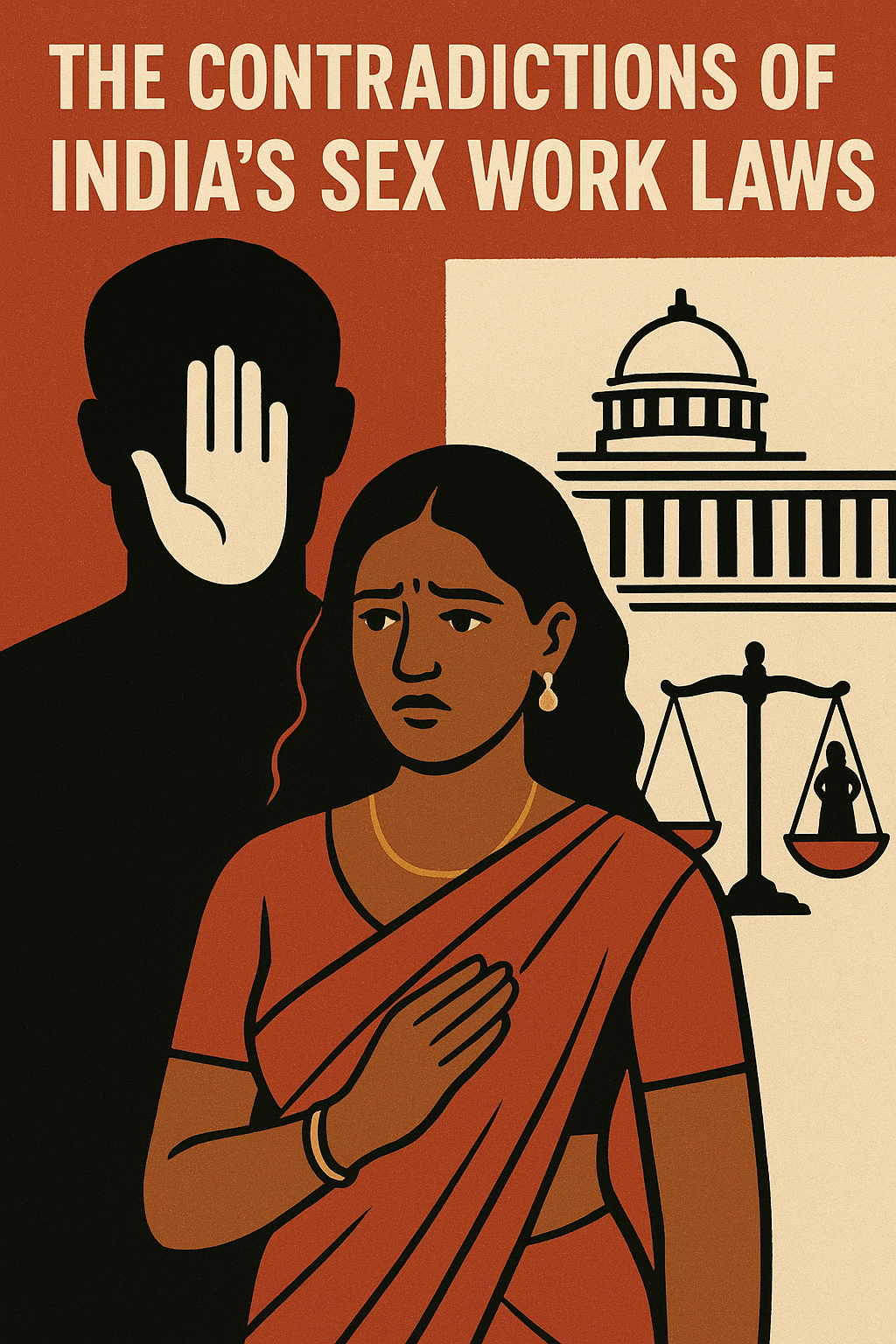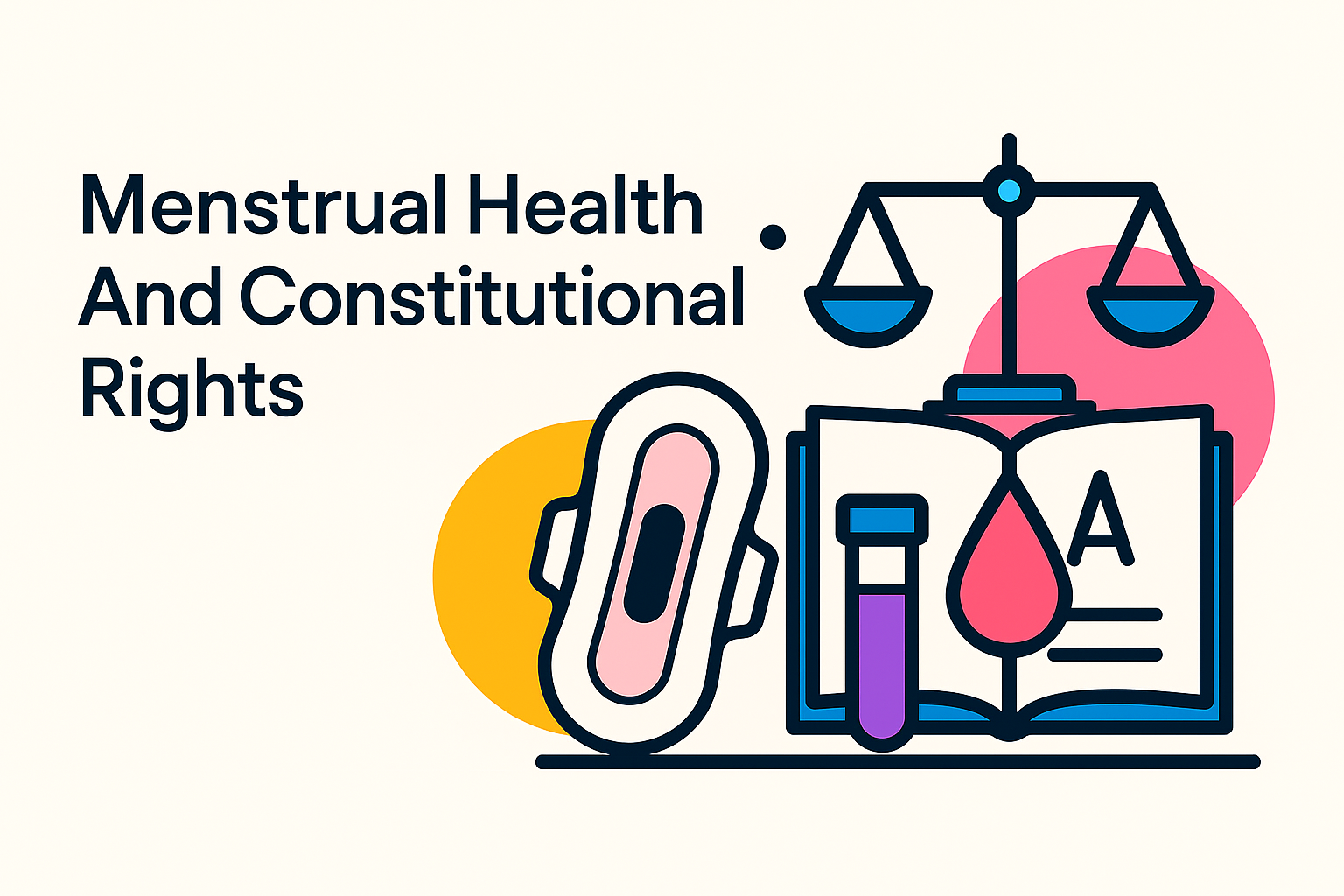



Author: Ankita Mishra, LLB
University: Deen Dayal Upadhyay Gorakhpur University
Nearly half of the world’s population experiences menstruation, a normal biological process that is still stigmatized, ignored, and silenced. Millions of menstruating people in India, particularly women and girls, face obstacles to healthcare, education, equality in the workplace, and dignity. These obstacles are essentially constitutional in nature rather than just social or cultural. Numerous fundamental rights, including the right to equality, the right to health and hygiene, the right to personal privacy, and most importantly, the right to live with dignity, are closely linked to menstrual health. India has not yet fully acknowledged menstrual health as a constitutional concern, despite these assurances. This article examines the relationship between menstrual health and constitutional rights, emphasizing the need for India’s legal system, policies, and judicial interpretation to improve.
Understanding Menstrual Health
The World Health Organization (WHO) states that menstrual health encompasses more than just the absence of illness. It encompasses freedom from discrimination and stigma, access to safe and sanitary menstrual products, water and sanitation facilities, and accurate information. As per the findings of the National Family Health Survey (NFHS-5), while the use of menstrual hygiene products is more common in urban regions, a large number of girls in rural India still struggle to access even basic sanitation and sanitary products.
In many regions of India, women are compelled to adhere to outdated taboos, menstruation is viewed as impure, and girls who are menstruating miss school. Therefore, this health problem is not just biological or medical; it is also a social justice problem that stems from discrimination, gender inequality, and the denial of basic rights.
Article 14: Right to Equality
Let’s look at how the Indian Constitution and menstruation health are related:
Any form of discrimination on the basis of religion, caste, ethnicity, gender, or place of birth is severely forbidden under Article 15. One could argue that it is against Article 15 to deny menstruating women access to public areas, education, or work because of their biological function. Menstrual equity is about equal opportunity, not “special” treatment, even though Article 15(3) permits special provisions for women and children. Safe sanitation facilities and free menstrual products in schools are examples of policies that are essential to promoting equality and are not privileges.
Article 21 protects an individual’s right to life and personal freedom, and over time, the courts have expanded its scope to include the right to dignity, privacy, and overall well-being. The Supreme Court highlighted reproductive health and bodily autonomy under Article 21 in Suchita Srivastava v. Chandigarh Administration (2009). Consequently, this right includes menstrual health, which has an impact on both physical and mental health. Infections, school dropouts, and mental stress can result from poor menstrual hygiene and limited access to restrooms, which is against Article 21. Sanitary products are frequently absent from prisons, homeless shelters, and other institutions for women, which amounts to the state’s failure to provide a dignified life.
Public Policy and Menstrual Health
India has implemented a number of programs to promote menstrual hygiene over the years: The Ministry of Health and Family Welfare oversees the Menstrual Hygiene Scheme (MHS). Adolescent health was the focus of Rashtriya Kishor Swasthya Karyakram (RKSK). The government introduced Suvidha Sanitary Napkins to provide reasonably priced pads. Although these programs are in place in theory, they are not always implemented, have little funding, and are not well known, particularly in rural and tribal areas. Furthermore, there is no federal law that ensures menstrual equity or mandates access to menstrual goods. India can take a cue from Scotland, which became the first nation to enact legislation prohibiting menstruation products in 2020.
Judicial Recognition and Social
Workplace Rights and Menstrual Leave
Rights at Work and Menstrual Leave Menstrual leave is becoming a topic of discussion. Some Indian businesses have menstrual leave policies in place, despite the fact that it is not legally required. The Supreme Court highlighted bodily autonomy and freedom of expression in Shreya Singhal v. Union of India (2015). According to this logic, it might be a violation of women’s fundamental rights to deny them the option to control their biological cycles through flexible work schedules or rest. Critics counter that these policies might decrease the number of women hired or perpetuate stereotypes. Therefore, it is necessary to have inclusive, well-balanced policies that accept menstruation rather than stigmatize it.
Menstruation in Schools
One of the main reasons why teenage girls drop out of school is a lack of menstruation facilities. The ASER Report 2018 states that many girls miss four to five days of school each month as a result of their periods. This violates: Article 21-A: Education as a Right Article 15: Prohibition of Discrimination Equal access to opportunities is outlined in Article 14. In Vishaka v. State of Kerala (2022), the Kerala High Court ordered the state to install vending machines and disposal units, upholding the necessity of adequate sanitation and menstrual hygiene management in schools.
Social Taboos and Human Dignity
Menstruating women are frequently exiled to “gaokars,” or menstrual huts, in rural areas, where they run the risk of being attacked by animals, bitten by snakes, or even killed. This backward custom, which has its roots in the Chhaupadi system, has been denounced by Indian health experts and banned in Nepal. Such dehumanizing actions are incompatible with the Article 21 Right to Human Dignity. In Nipun Saxena v. Union of India (2018), the Delhi High Court stated that dignity is a constitutional requirement rather than a “luxury.”
Private Sector and Corporate Responsibility
In order to ensure access and normalize menstruation, corporates can play a big part: Campaigns to raise awareness of menstrual health can be funded by CSR initiatives. Menstruation products, sanitary facilities, and gender-sensitive workplaces should all be provided by businesses. Programs for employee wellness should include menstrual education.
Need for Comprehensive Legislation
A Menstrual Health and Hygiene Rights Bill that addresses the following is desperately needed in India: Menstruation supplies are freely available in hospitals, shelters, prisons, and schools. There should be facilities for garbage and restrooms. Protections at work, such as flexible scheduling or menstruation leave All genders receive education about menstruation in schools. Criminalization of antiquated behaviors that put menstruating people in danger The United Nations Sustainable Development Goals’ SDG 3 (Good Health and Well-Being) and SDG 5 (Gender Equality) would be in line with such a law.
Recommendations and Way Forward
Conclusion
Menstruation is neither an impurity, a personal problem, or a curse. It is a constitutional and public health matter. In order to acknowledge menstrual health as a right rather than a privilege, India must overcome centuries of stigma. When read empathetically and equally, the Indian Constitution offers a solid basis for ensuring menstrual justice. However, rights must be upheld, lived, and safeguarded; they are not sufficient on paper. Only then can we hope for a society that treats menstruation with equality, respect, and dignity rather than shame.
Citations